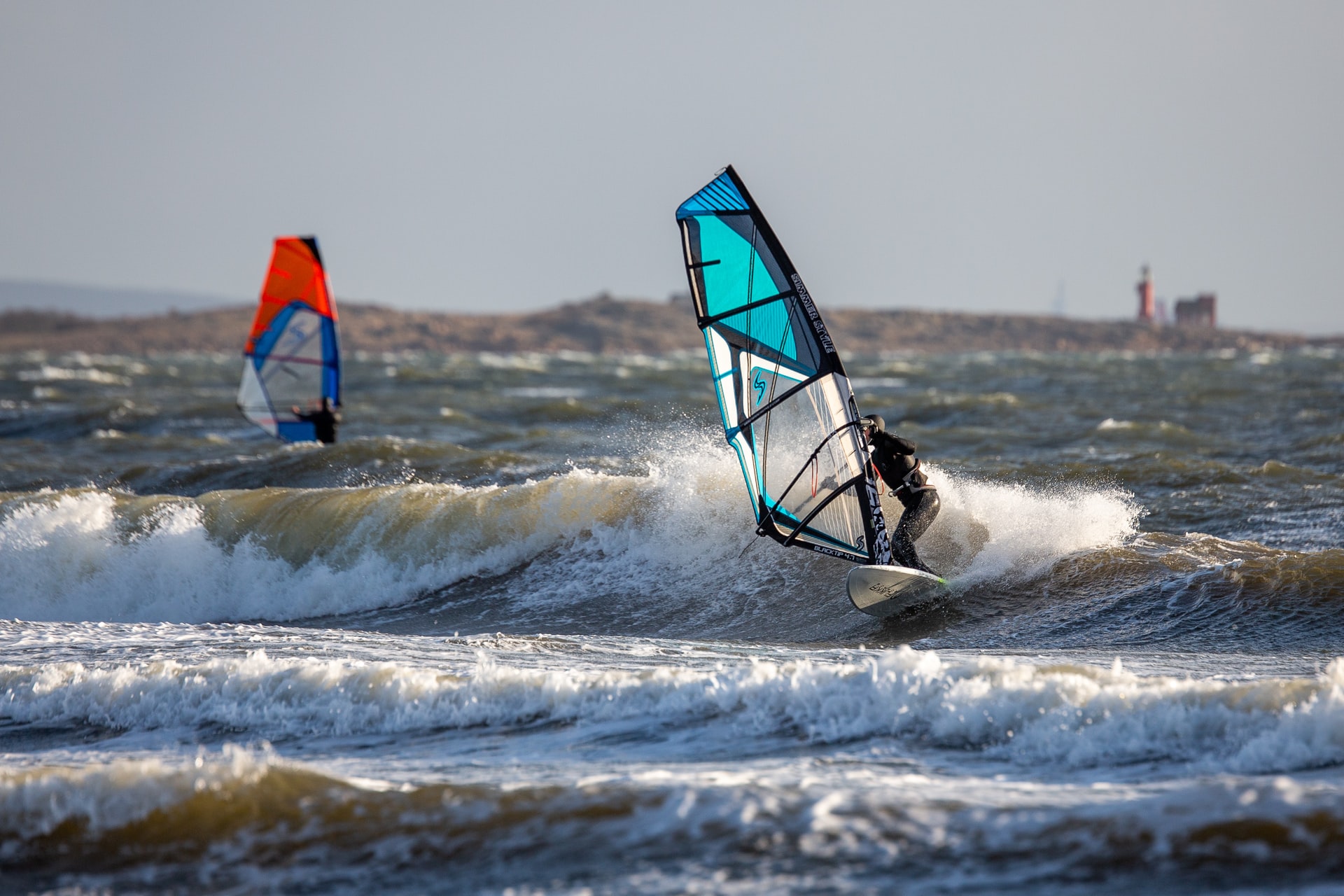Although both surfing and windsurfing use the word “surfing”, you may be surprised to know how different they are.
Yes, both surfing and windsurfing use a board to ride across the surface of a water body, but the similarities mostly stop there.
Surfing requires waves to propel a rider forward, while windsurfing, as the name suggests, relies on moderate to heavy wind which pushes against a sail connected to the center of the board.
Below we will look deeper into the differences between surfing and windsurfing, the equipment needed for each, and what may be best for you due to your location and preferable conditions.
- 8 Differences Between Surfing and Windsurfing
- 4 Similarities Between Surfing & Windsurfing
- Which Is Easier To Learn?
- Is Surfing or Windsurfing More Fun?
- Can a Windsurf Board Be Used For Surfing?
- Can I Do Both in the Same Location?
- Is Surfing or Windsurfing More Dangerous?
- How’s the Equipment Different?
- 5 Tips To Help You Choose Which Is Right for You
- Conclusion
- You Might Also Like…
8 Differences Between Surfing and Windsurfing
1. The Sail
The primary and most obvious difference between the two sports is that there is a sail attached to windsurfing boards, while surfboards are flat.
2. Board Size & Shape
Although both sports use boards in varying sizes, surfboards are generally shorter, narrower, and lighter (less volume).
However, this changes when surfing on a longboard which can reach from 8 – 12 ft.
3. Moving Around
One of the most challenging aspects of surfing (after learning to stand up) is the constant effort of using your arms as paddles.
When windsurfing, there is no need to paddle.
Provided you have the correct wind conditions and the needed technique, your sail will replace your arms as a means to move around.
4. Body Position
Although when surfing a wave on a surfboard, your body position is much the same as it is when windsurfing, the remainder of the time this is very different.
As surfing requires the rider to paddle with their arms, the majority of time spent in the water while surfing is done in the prone position.
It is only while riding a wave that a surfer is standing, while with windsurfing the rider remains standing all of the time.
5. Wind
As a general rule, lighter winds are better for surfing.
Although this is not always true as different wind directions and swell size will determine the ideal amount of wind.
With windsurfing, on the other hand, almost the opposite is true.
Approximately 8 knots is generally considered the required minimum for beginners, and 15-25 knots the preferred wind strength for most intermediate or advanced windsurfers.
Although some professionals can windsurf at speeds of 50 knots and above, this is way too windy for the majority of all other windsurfers.
6. Waves
Surfing needs waves. You cannot surf if there are not sufficiently sized waves to ride on.
However, windsurfing can be done both on flat water as well as riding waves as surfers do.
So waves are optional for windsurfers, not required.
7. Equipment
Surfing uses significantly less equipment than windsurfing.
As a surfer, all you need is a surfboard, wetsuit, a board leash, and some wax to prevent slipping off of the board.
As a windsurfer, you will need far more, such as a sail, mast, boom, mast foot, harness, board, a wetsuit.
Especially the mast, boom and sail make a significant difference in terms of weight and required space compared to surfing equipment.
8. Cost
As surfing requires far less equipment, your start-up cost and maintenance is far less than it is with windsurfing.
Windsurfing can set you back up to USD 3000 even for a cheap starter kit.
As for surfing, if cheap is what you are going for, you can be in the water for as little as a few hundred dollars.
4 Similarities Between Surfing & Windsurfing
As mentioned before, there are far more differences between windsurfing and surfing, however, there are a few similar fundamentals.
1. Riding Over a Water Body
Both sports, at their core, use momentum to send a rider traveling over a body of water.
2. Standing on a board
In both surfing and windsurfing, the rider travels (for the most part) while standing on their feet.
This is different from other watersports such as bodyboarding and kayaking which, although traveling over a body of water, are done sitting or lying in the prone position.
3. Heavily Reliant On Weather Conditions
Although the ideal conditions may differ between the two sports, both surfing and windsurfing rely on the correct wind direction, strength, and often the amount of swell provided by the ocean.
4. Extreme Sports
Both windsurfing and surfing are considered extreme sports.
When these sports are taken to a higher level, such as larger waves, stronger winds, and risky locations, their danger level drastically increases.
That being said, at a lower level (beginner or intermediate) they can both be considered reasonably safe.
Which Is Easier To Learn?
When it comes to most sports that are similar, there will always be a contradiction between the two groups of enthusiasts of which sport is easier.
Both surfing and windsurfing come with difficulties and a steep learning curve.
In both sports, it is important to learn about the ocean (if you are windsurfing in the sea), how the wind works, and all about currents.
Above this, both sports include a steep learning curve when it comes to standing up on your board.
From here, the learning takes very different directions.
If a surfer tries windsurfing, they may say that windsurfing is easier because they have already gone through the basics of learning how the ocean works, as well as how to balance on a board in a body of water.
This is likely also true when a windsurfer begins to surf.
Why Surfing May Be Harder
One of the toughest parts of surfing is the physical demand that the sport requires.
As you will need to generate your own speed through paddling for getting past the break, moving around the lineup, and creating momentum to catch a wave, surfing can be considered the harder sport.
Of course, surfing also requires an in-depth knowledge of how waves break, when to catch them, and when to let them pass.
Why Windsurfing May Be Harder
Windsurfing requires a lot more equipment. This means that there is a lot more to learn about before even stepping foot into the water.
Because windsurfing is so reliant on the wind, a much bigger understanding of how wind and downhaul work is fundamental to windsurfing.
This is different from surfing as on a surfboard it is only important to know if the wind conditions are good or not.
Another important point is that it is very possible to learn how to surf without lessons, while with windsurfing, lessons are almost mandatory.
It is difficult to tell which sport is harder, as each person will have their own experience.
However, it is very likely that after learning one, the other will be easier to pick up.
Is Surfing or Windsurfing More Fun?
Once again, enjoyment of a sport more than often comes down to personal preference.
Some may argue that windsurfing is more fun as you do not need waves, and it can be done in any large body of water.
On the other hand, surfing may be more fun as it can be a lot more relaxing as you can stop, sit on your board, and take in everything that nature has to offer.
There is no way to say which is more fun, it will always come down to what best suits you and your preferences.
Can a Windsurf Board Be Used For Surfing?
It is very possible to surf on a windsurfing board. This is because both boards are built with similar dynamics.
Both boards are similar in shape, and contain fins for support and turning.
The biggest difference comes in with the board’s volume.
Because windsurfing boards are often larger and thicker, a surfer will find them harder to maneuver, as well as to duck dive under oncoming waves.
If you are a windsurfer and want to learn how to surf, it is always better to buy a surfboard.
However, if you do not have the funds to do so, you can still have some fun with your windsurfing board while you save up to get the correct equipment.
Can I Do Both in the Same Location?
Surfing is a lot more location-dependent than windsurfing.
You can windsurf on a lake, in the sea, or even on a river – but you need the ocean and its waves in order to surf.
It is possible to windsurf on a flat body of water, or while riding along waves, but there are a few surf locations that will not work for windsurfers.
Small, short rocky beach breaks and dry reefs will not suit a windsurfer. This is because a windsurfer needs more space to travel and to turn.
Apart from that, wiping out on a dry reef with a windsurfing board will likely lead to the destruction of your board and mast, while when surfing it is a lot easier to avoid these situations.
Is Surfing or Windsurfing More Dangerous?
It is well known that surfing can be dangerous. However, windsurfing comes with its own dangers, which in some cases can surpass those of surfing.
There is no way to tell if surfing is more dangerous than windsurfing as it often comes down to the rider’s experience and knowledge.
An experienced surfer trying to windsurf in mild conditions with no knowledge of the sport can be far more dangerous than that surfer paddling out into 10-foot waves.
That being said, the dangers of windsurfing on a lake can decrease by a large margin as the risk of being blown out to sea is eliminated.
It is important to keep in mind that both windsurfing and surfing are extreme sports, and therefore come with a high level of risk, especially when done recklessly and without knowledge of the dangers that they pose.
How’s the Equipment Different?
As mentioned before, windsurfing requires much more equipment than surfing.
Below we will take a look at the basic equipment required for each sport in order to get started.
| Equipment | Surfing | Windsurfing |
|---|---|---|
| Wetsuit | Yes | Yes |
| At Least 1 Board | Yes | Yes |
| Fins For The Board | Yes | Yes |
| Surf Wax | Yes | No |
| Board Leash | Yes | No |
| Sail | No | Yes |
| Mast | No | Yes |
| Mast Base | No | Yes |
| Harness | No | Yes |
| Boom | No | Yes |
| Life Jacket | No | Optional (mostly) |
| Helmet | No | Optional |
As you can see, the amount of equipment needed for windsurfing far surpasses that of surfing.
It should also be mentioned that when learning to windsurf it is recommended that you have various types of sails, which will make learning in different conditions easier.
5 Tips To Help You Choose Which Is Right for You
If you are contemplating which sport to take up, but are not quite sure which will be the best for you, considering the following tips may help you make up your mind.
1. Location
Your location will be a major deciding factor as to which sport is best for you.
If you do not live by the ocean, but live close to a lake, windsurfing may be the best choice, as your travel time will be greatly reduced.
Similarly, if you live by the ocean but there are very seldom waves, taking up surfing will not provide much entertainment.
On the flip side, if you live by a rough sea that constantly has large breaking waves, attempting to learn how to windsurf in these conditions will be dangerous and not enjoyable.
2. Price
Your budget should also be considered when deciding between the two sports.
As surfing requires far less equipment and can be learned without lessons, this is by far the cheaper sport to take up.
3. Availability of Lessons
Consider how easy it will be to obtain lessons for either sport.
Although you do not need surf lessons, they will drastically shorten your learning curve.
Similarly, if there are no windsurf schools close by, learning to windsurf may be near impossible.
4. Ease of Transport
Because windsurfing requires so much equipment, moving it all around becomes more difficult.
If you are the type to take the train or a bike to the beach then you should strongly consider surfing over windsurfing.
However, if you have a car, this is slightly less relevant.
5. What Sounds More Fun
If you have considered all of the above but still cannot make up your mind, you should consider what sounds more enjoyable to you.
Even if you take into account all the practical advice, if you take up a sport that you are not interested in, then it’s unlikely that you will enjoy it (although you never know until you try and may be surprised).
Conclusion
Although both windsurfing and surfing are done by riding a board over the surface of a water body, in many ways, these sports are entirely different.
From equipment to location and weather conditions, the ideal choice between the two will vary.
Choosing what is right for you will always come down to personal preference, but given the chance, it is always best to try both and decide for yourself.
You Might Also Like…
-

Do Surfers Ride Switchfoot? 5 Benefits (& Why You Should Learn It)
-

Do Surfers Shave Their Legs? 5 Common Reasons (+Pros & Cons)
-

Do Surfers Wear Helmets? 8 Situations You Should Wear One (+4 Cons)
-

Do Surfers Poop in the Ocean? Myths & Facts (+5 Tips)
-
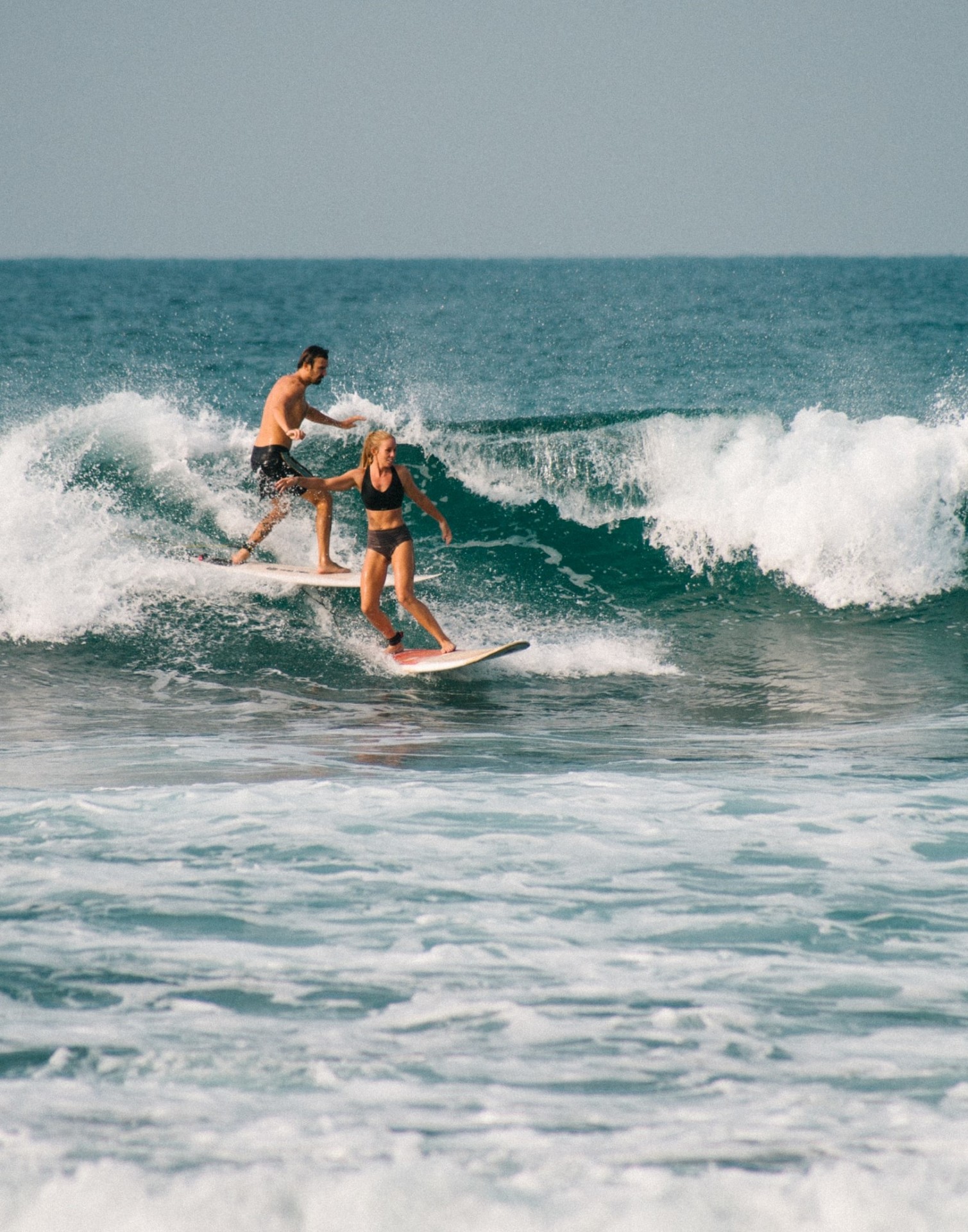
Do Surfers Run Into Each Other? 5 Common Reasons (+8 Tips)
-
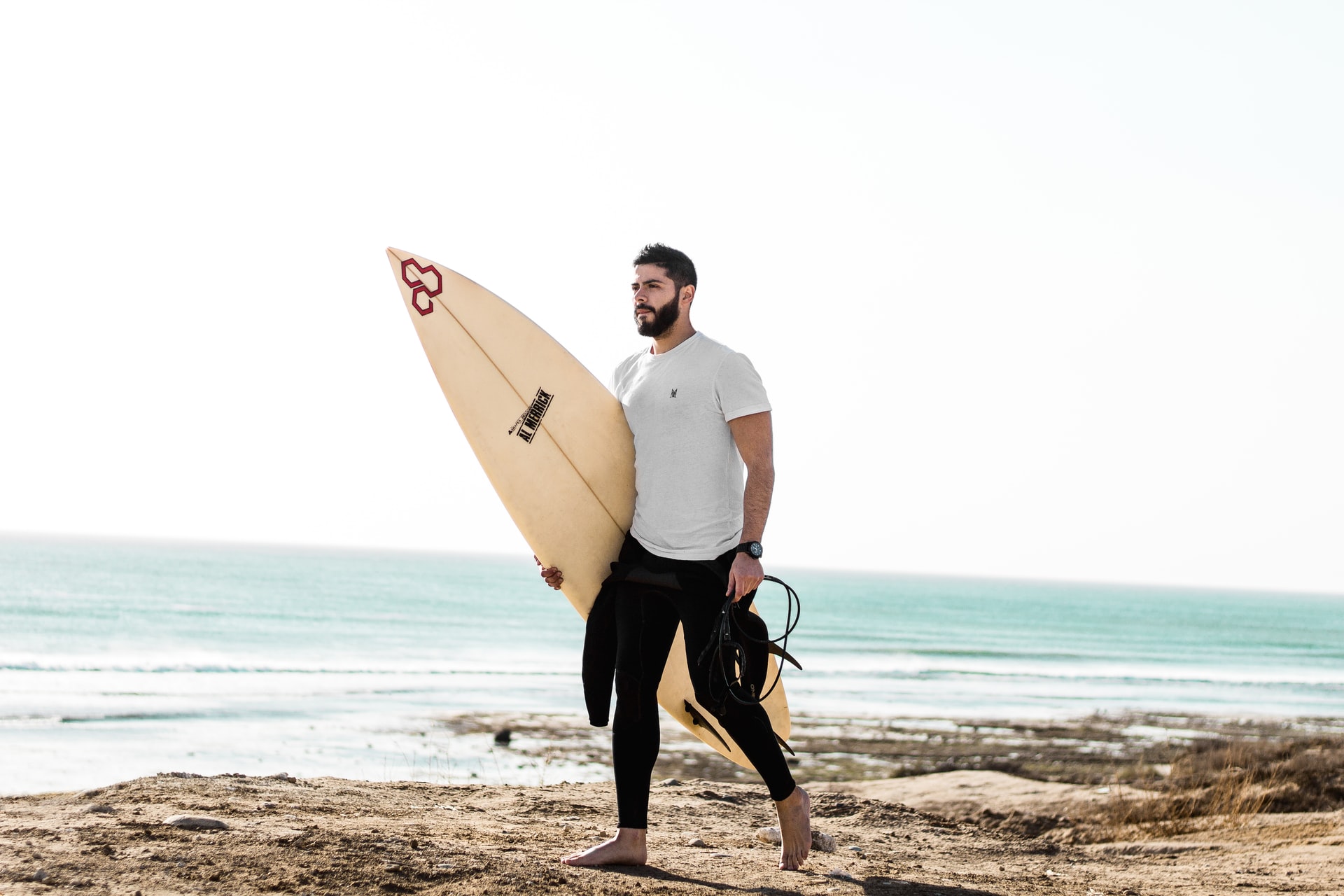
Do Surfers Have Beards? Pros & Cons You Should Know (+4 Tips)
-
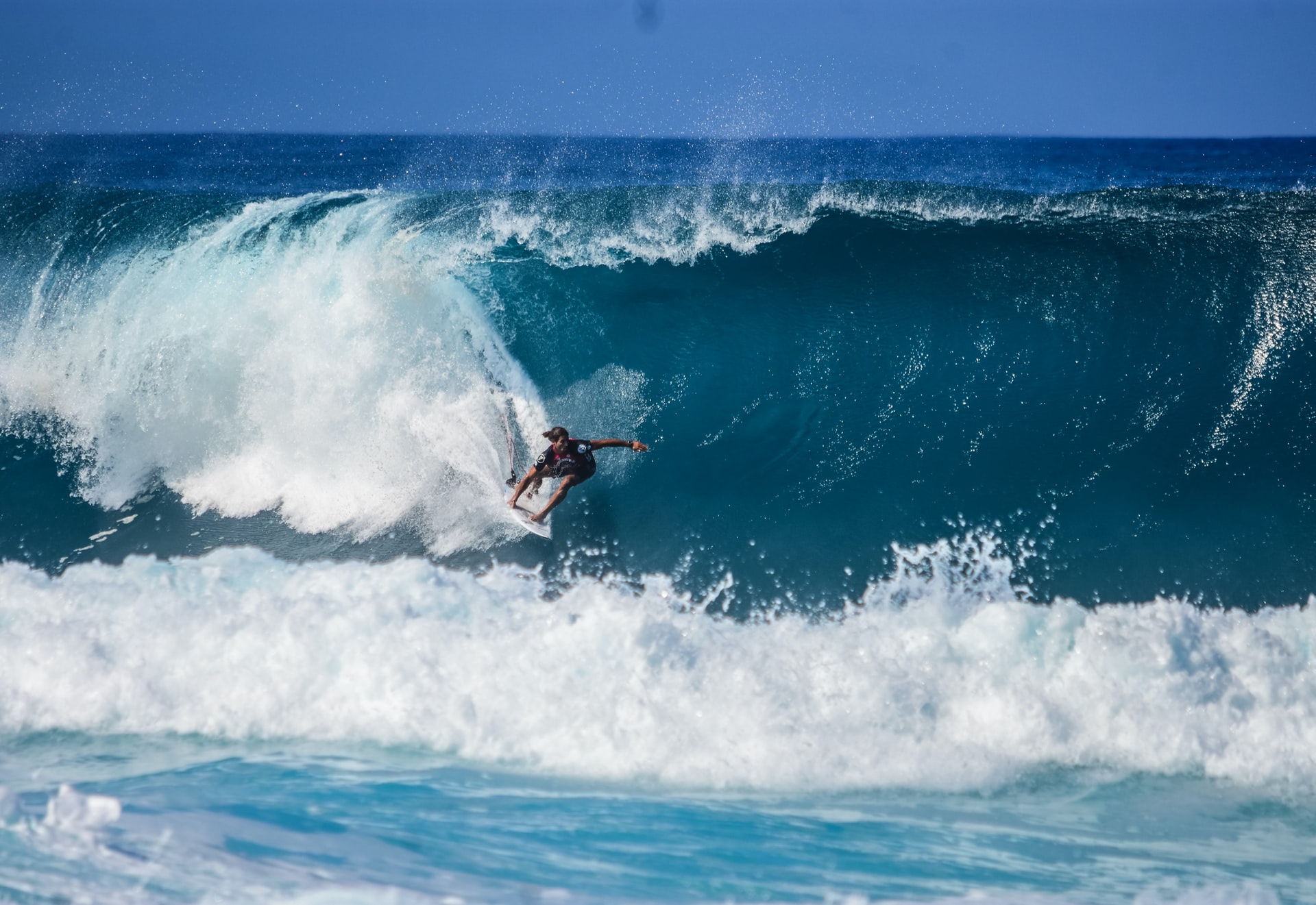
Do Surfers Like Constructive or Destructive Waves? (+Pros & Cons)
-

How to Surf Safely: 34 Crucial Tips (Every Surfer Should Know)
-
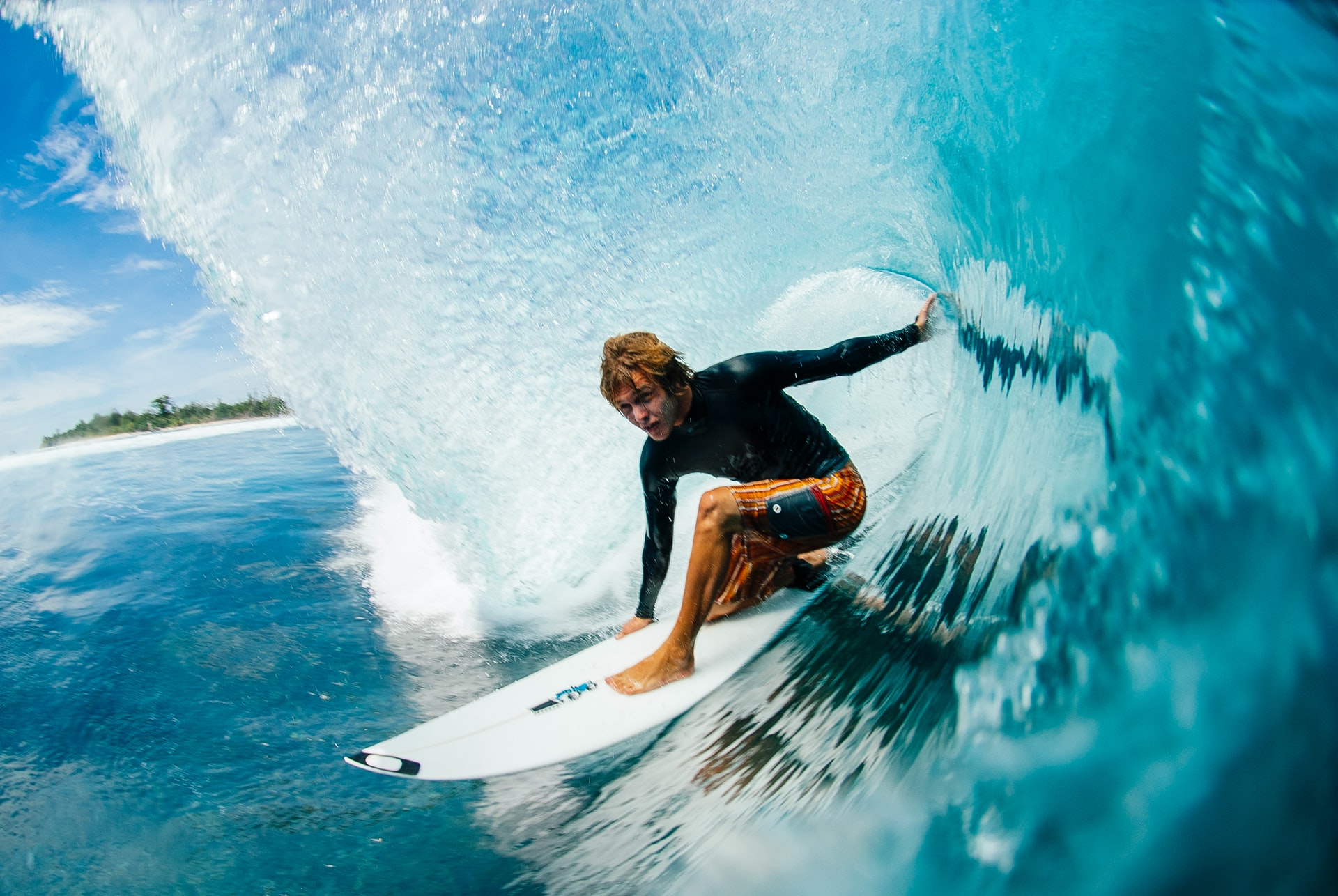
Do Pro Surfers Use Leashes? (+6 Reasons Why You Should Too)
-
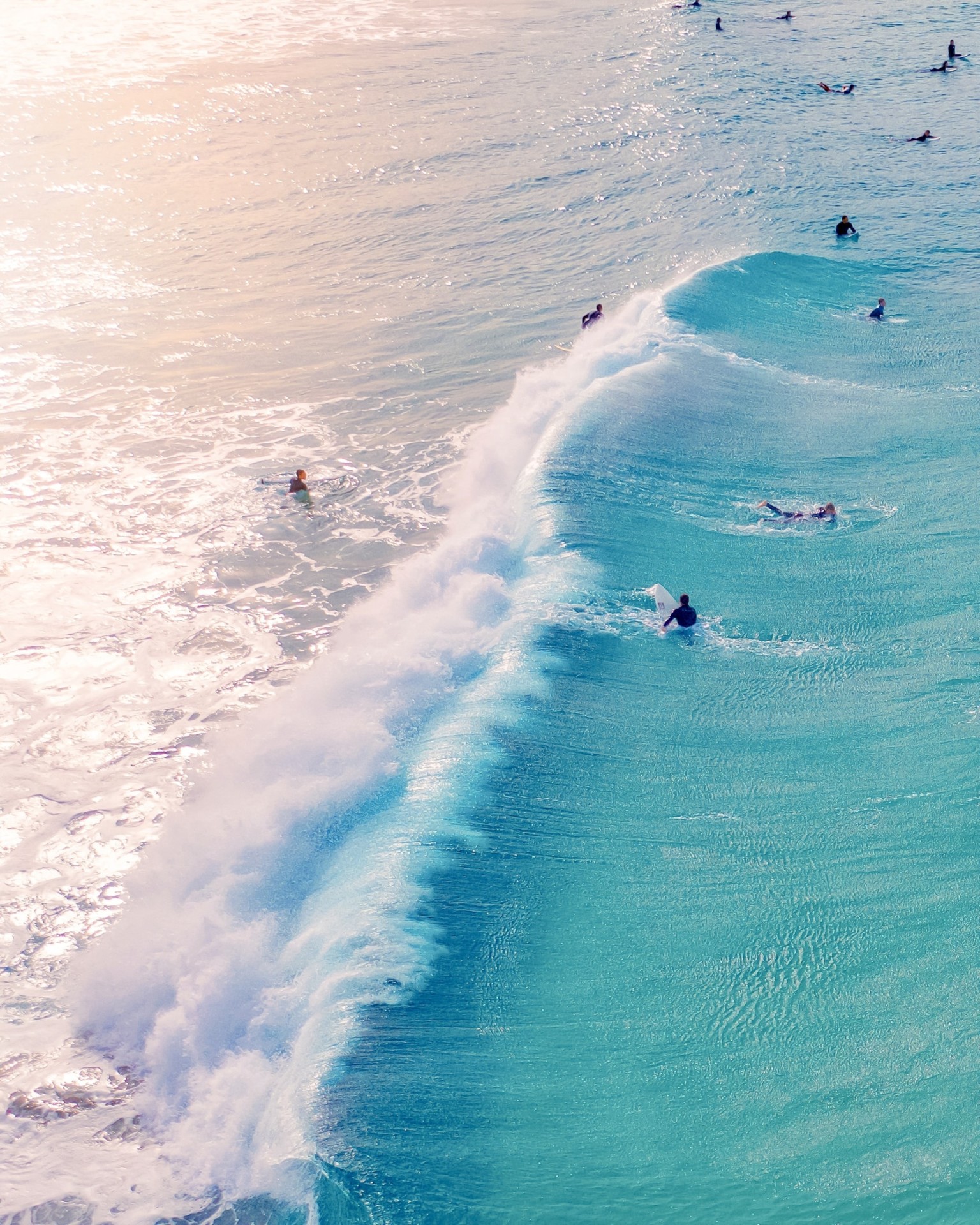
Do Many Surfers Drown? Here Are the Facts (+4 Common Reasons)
-
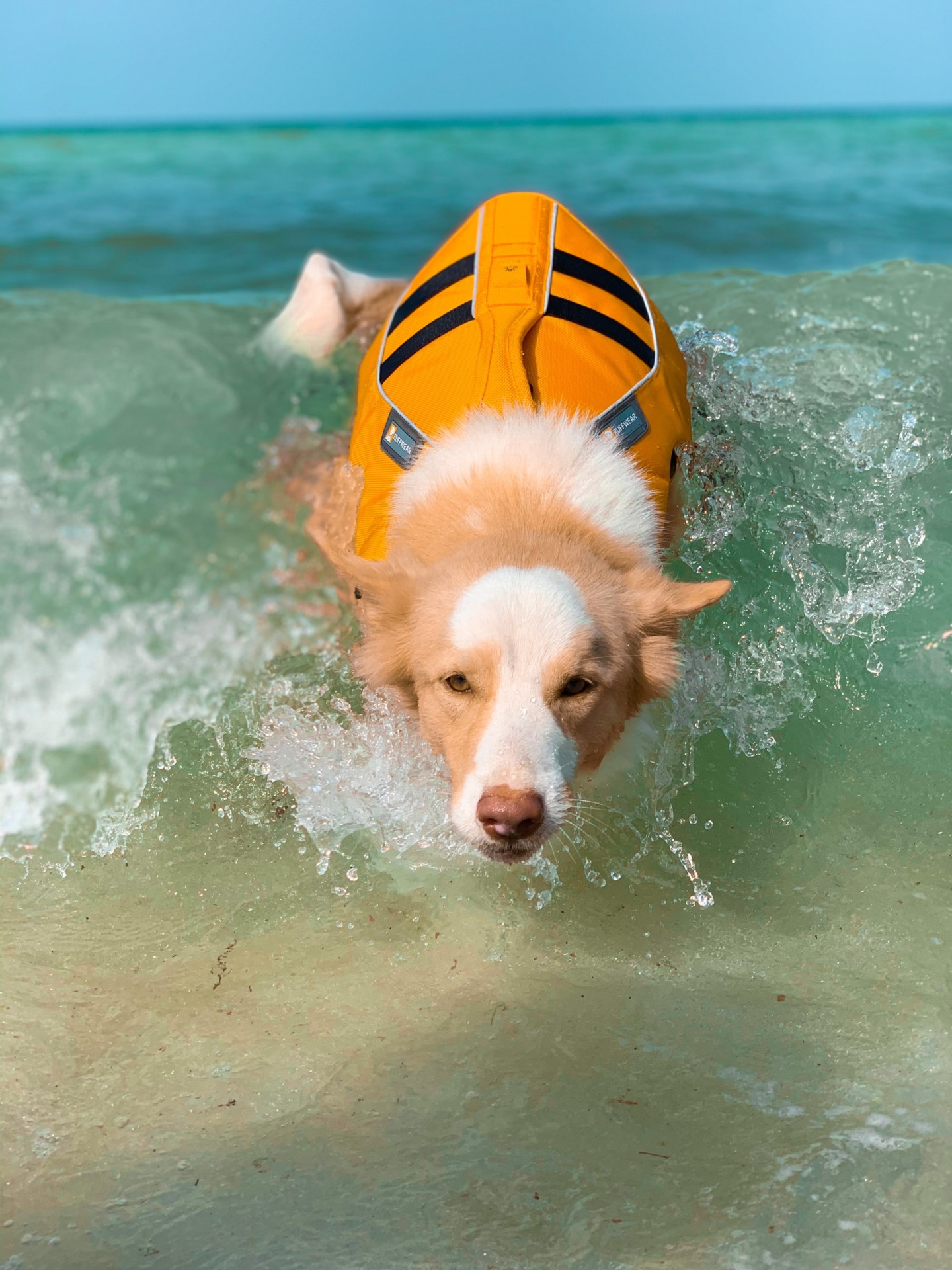
Do Surfers Wear Life Jackets? (7 Reasons Why They Don’t)
-
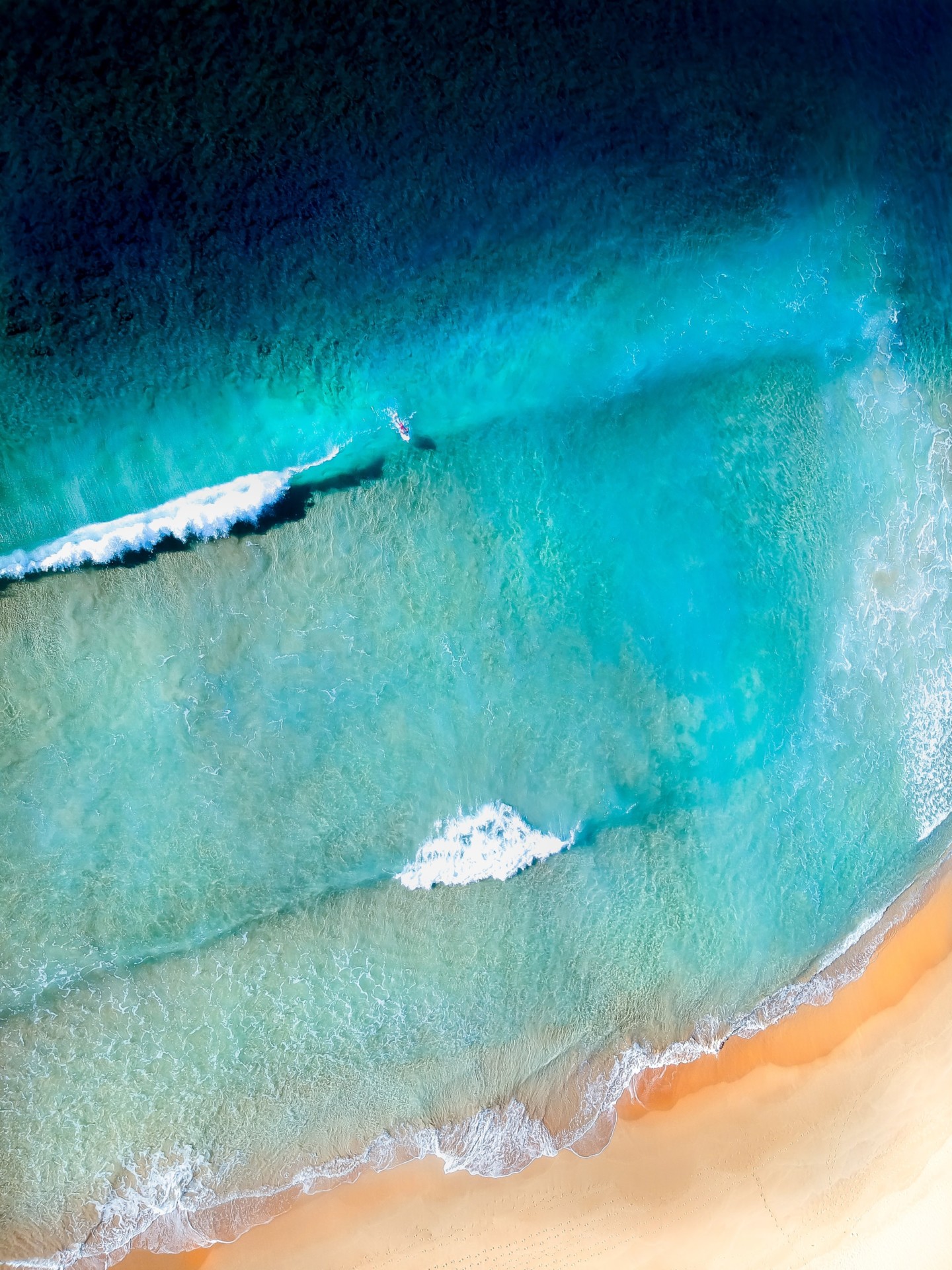
Do Surfers Like Rip Currents? (& How to Use Them Safely)

